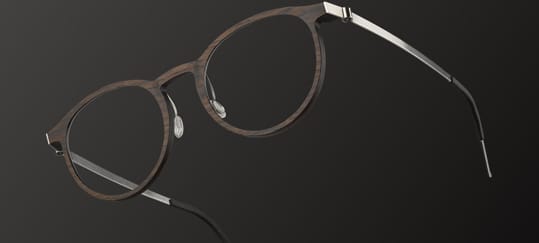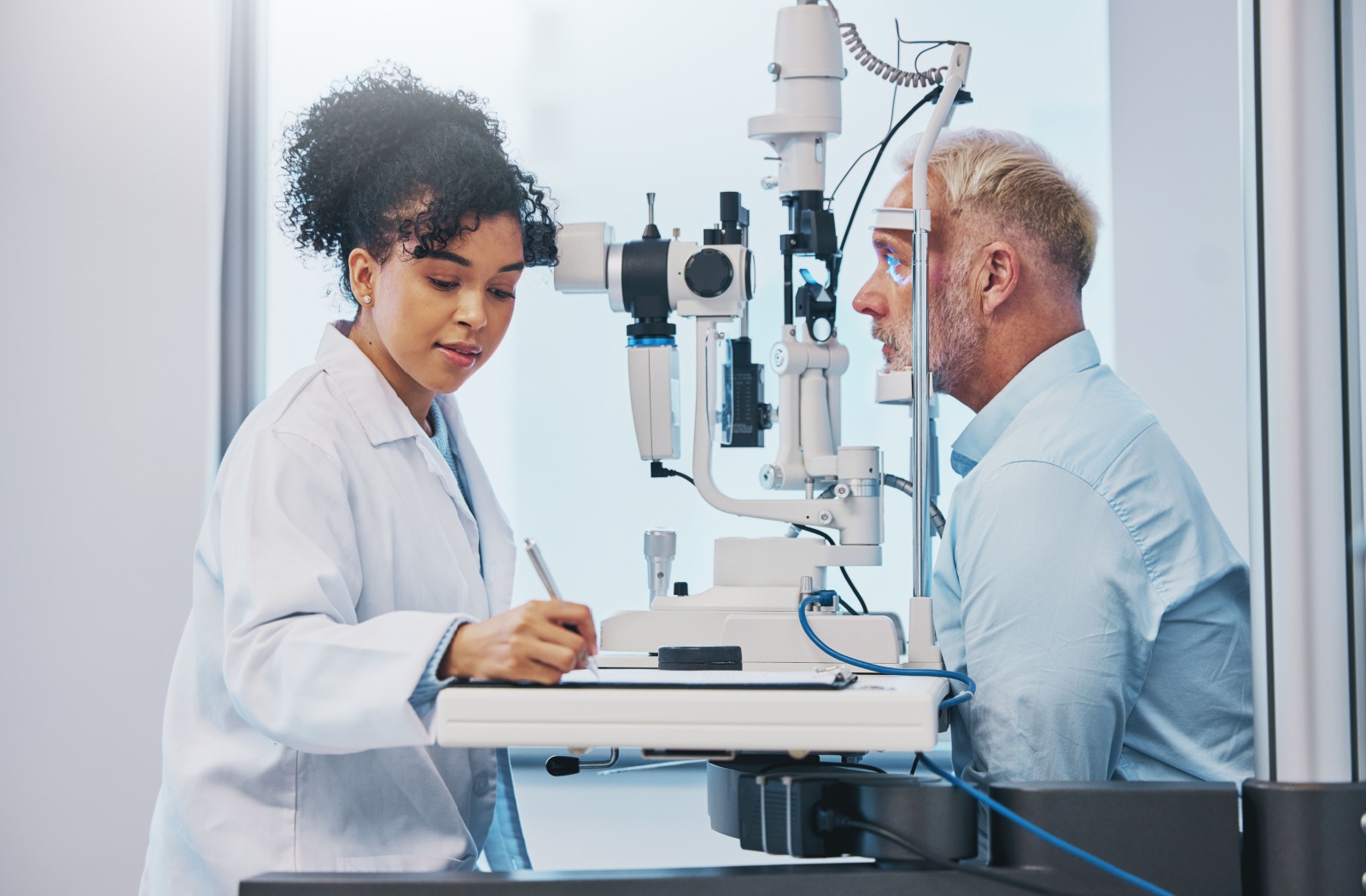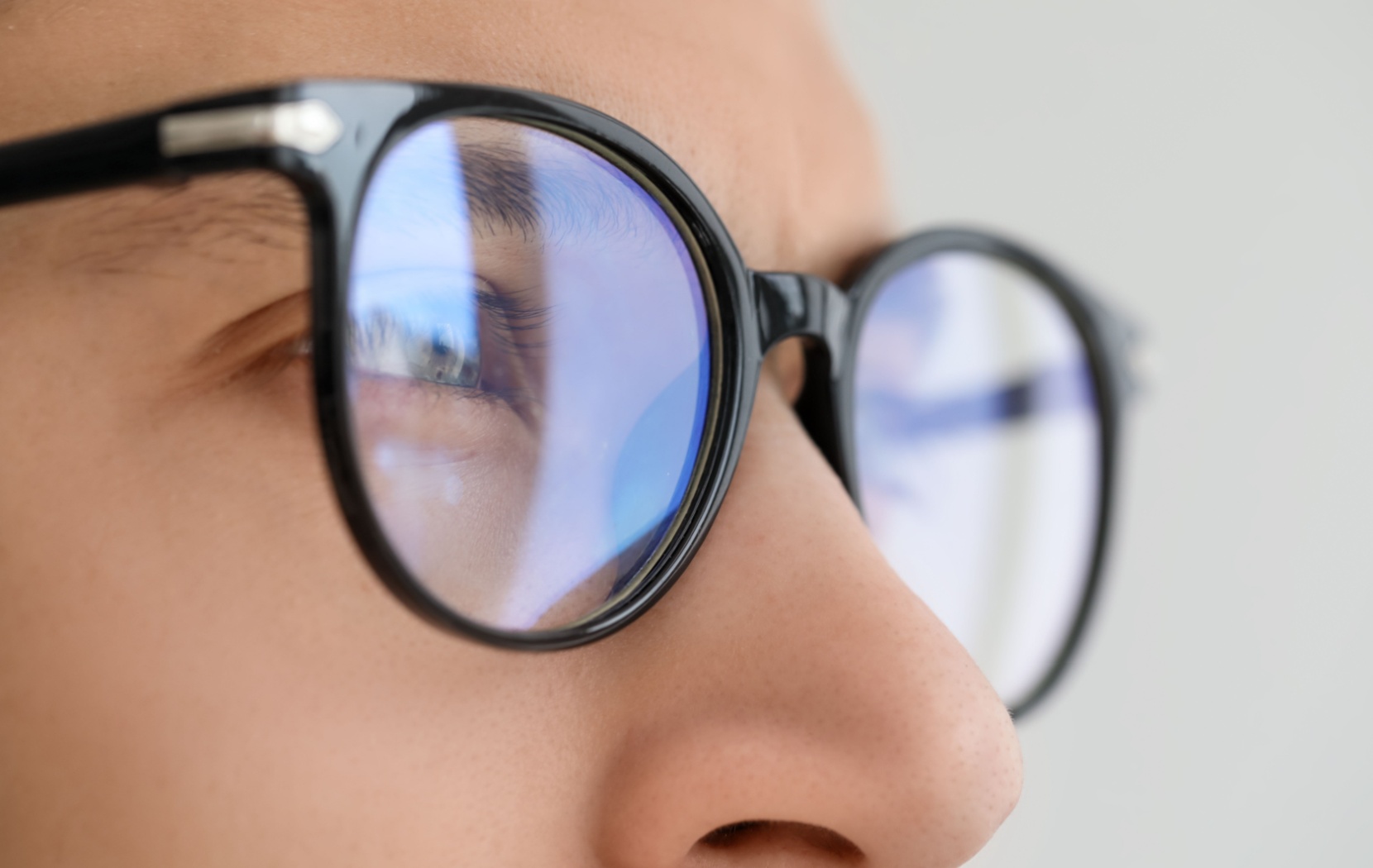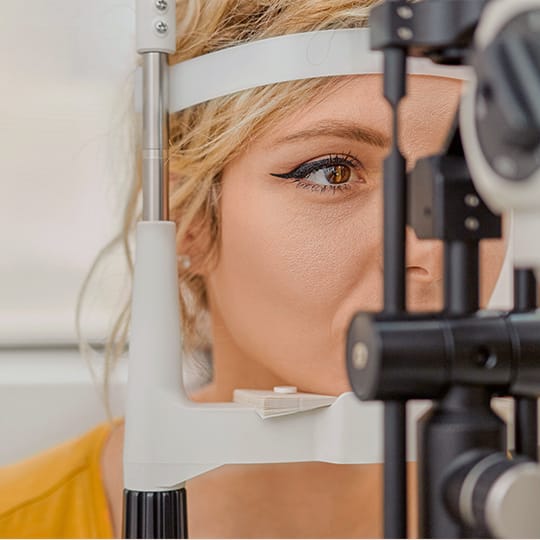Eye Strain from Your Screens? We Can Help!
These days, we’re lucky to have all the information in the world at our fingertips, as well as easy connections to far-off friends and family. However, all this time looking at screens can take a toll on our eyes.
Digital eye strain may be causing your eyes to work harder than necessary. If you have concerns about your eyes and your screen uses, please come in for a consultation and exam so we can get to the root of the problem!


The Symptoms of Digital Eye Strain
Digital eye strain can cause irritating symptoms, including:
- Sore, tired, burning, or itching eyes
- Watery or dry eyes
- Blurred or double vision
- Headache
- Sore neck, shoulders, or back
- Increased sensitivity to light
- Difficulty concentrating
- Feeling that you cannot keep your eyes open
If these are frequent problems for you, talk to your optometrist to see what we can do for you.
Modern Solutions for a Modern Issue
Set Up Your Desk to Serve You Better
If digital eye strain is a concern, see if it’s possible to set up your workspace more ergonomically. This includes steps like:
- Positioning your screen about an arm’s length from your eyes and 20 degrees below eye level.
- Setting the colour and contrast tones to suit your eyes and match the brightness of your screen with your surroundings.
- Minimizing reflected glare on your screen by dimming the lights in the room if possible, and consider using a protective anti-glare screen cover.
- Positioning your screen so it sits perpendicular to windows and other bright light sources. If you are having trouble locating the source of the glare, turn off your monitor to reveal a darkened screen and tilt/swivel your monitor until the reflection disappears.
- Keeping your screen free of fingerprints and dust as they can reduce visual clarity.
- Using a clipboard that attaches alongside your monitor so your screen and paperwork are at the same working distance.
These simple adjustments can make long hours at a computer easier on your eyes.
Follow the 20/20/20 Rule
We spend a lot of time with our screens, as they’re vital for work and play. If you spend a lot of time on your device, keep in mind the 20-20-20 rule: every 20 minutes, take a 20-second break and focus your eyes on something at least 20 feet away.
Serving Calgarians at 3 locations
Calgary Downtown
- 403-264-2639
- 403-264-2872
- dt@calgaryoptometry.com
- Suite 110, 840 7 Avenue SW
- Calgary, Alberta T2P 3G2
Office Hours
- Monday: 8:00 AM – 4:30 PM
- Tuesday: 8:00 AM – 4:30 PM
- Wednesday: 8:00 AM – 4:30 PM
- Thursday: 8:00 AM – 4:30 PM
- Friday: 8:00 AM – 4:30 PM
- Saturday: Closed
- Sunday: Closed
Lake Bonavista
- 403-278-8851
- 403-271-5139
- bv@calgaryoptometry.com
- #630, 12100 Macleod Trail SE
- Calgary, Alberta T2J 7G9
*The office is closed between 12:00 pm and 1:00 pm Mondays to Fridays.
Office Hours
- Monday: 8:30 AM – 5:00 PM
- Tuesday: 8:30 AM – 5:00 PM
- Wednesday: 8:30 AM – 5:00 PM
- Thursday: 8:30 AM – 7:00 PM
- Friday: 8:30 AM – 5:00 PM
- Saturday: 8:00 AM – 2:00 PM
- Sunday: Closed
Huntington Hills
- 403-274-5234
- 403-274-1674
- hh@calgaryoptometry.com
- 6530 4 Street NE
- Calgary , Alberta T2K 6H2
*The office is closed between 12:00 pm and 1:00 pm Mondays to Fridays.
Office Hours
- Monday: 8:30 AM – 5:00 PM
- Tuesday: 8:30 AM – 7:00 PM
- Wednesday: 8:30 AM – 5:00 PM
- Thursday: 8:30 AM – 5:00 PM
- Friday: 8:30 AM – 5:00 PM
- Saturday: 8:00 AM – 2:00 PM
- Sunday: Closed

EXPLORE OUR SERVICES
Our Brands








Our Google Reviews


Our Blog
How Long Does an Eye Exam Take?
Eye ExamEye exams are more than just vision checks, they’re also an opportunity to evaluate your overall health. From tracking changes in your prescription to detecting conditions like glaucoma or diabetes early, a quick visit can go a long way in protecting your sight. A routine eye exam typically takes about 30 minutes, while specialty exams, […]
Can Allergies Cause Dry Eyes?
Dry EyeAllergies can turn what should be a pleasant day into an uncomfortable battle. From rubbing itchy, swollen eyes to dealing with constant watering and blurred vision, the struggle is all too real for many. Allergies can absolutely leave your eyes feeling dry, irritated, and even sensitive to light, making it difficult to focus on your […]
How to Prevent Myopia from Worsening
Children’s Eye HealthMyopia, commonly referred to as nearsightedness, affects millions of people worldwide. For those with myopia, nearby objects appear clear, while distant objects are blurry or out of focus, making everyday activities like reading and driving a challenge. While myopia can be easily corrected with glasses or contact lenses, there are also ways to slow its […]
How Long Does an Eye Exam Take?

Eye exams are more than just vision checks, they’re also an opportunity to evaluate your overall health. From tracking changes in your prescription to detecting conditions like glaucoma or diabetes early, a quick visit can go a long way in protecting your sight. A routine eye exam typically takes about 30 minutes, while specialty exams, […]
Can Allergies Cause Dry Eyes?

Allergies can turn what should be a pleasant day into an uncomfortable battle. From rubbing itchy, swollen eyes to dealing with constant watering and blurred vision, the struggle is all too real for many. Allergies can absolutely leave your eyes feeling dry, irritated, and even sensitive to light, making it difficult to focus on your […]
How to Prevent Myopia from Worsening

Myopia, commonly referred to as nearsightedness, affects millions of people worldwide. For those with myopia, nearby objects appear clear, while distant objects are blurry or out of focus, making everyday activities like reading and driving a challenge. While myopia can be easily corrected with glasses or contact lenses, there are also ways to slow its […]







